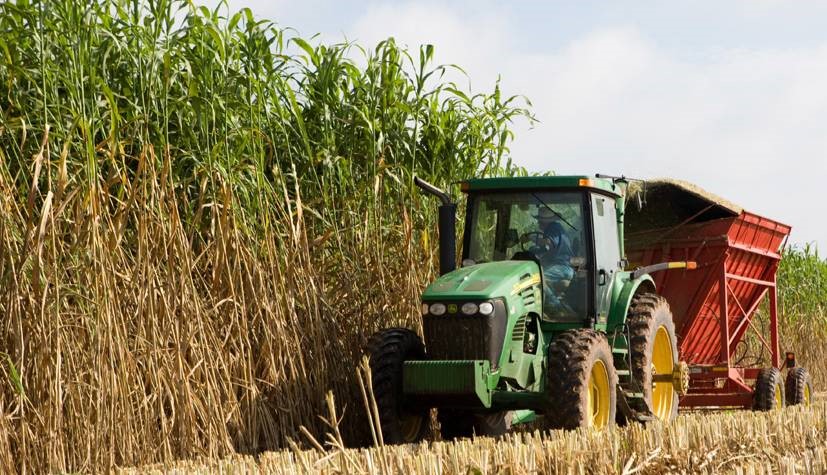
-
John Mullet
- Perry L. Adkisson Chair in Agricultural Biology, Professor, Biochemistry and Biophysics
- Focus Area: Developing next-generation crops through the study of genomics, gene regulatory networks, development, drought resilience, bioenergy crop design (NOT CURRENTLY TAKING GRADUATE STUDENTS)
- Office:
- BICH 306A
- Email:
- [email protected]
- Phone:
- 979-314-8290
Education
- Undergraduate Education
- B.S.: Colgate University, Hamilton, NY
- Graduate Education
- Ph.D.: University of Illinois, Champaign, IL
- Postdoc.: Rockefeller University, New York, NY
Areas of Expertise
- Plant genomics
- genetics
- biochemistry
- physiology
Professional Summary
Improvements in plant productivity, resilience, and composition are needed to provide food, feed, biofuels, and bio-products for a rapidly developing world population that will reach ~10 billion by 2050. To help meet this need, the Mullet laboratory is collaborating with scientists affiliated with DOE Bioenergy Research Centers and the National Labs to acquire knowledge that will enable the design of next-generation crops. Our research team is using a combination of genetic, genomic, and biochemical approaches to generate knowledge of biochemical pathways and gene regulatory networks that will enable the design of next-generation climate-resilient bioenergy crops.
J. E. Mullet, D. T. Morishige, R. McCormick, S. Truong, J. Hilley, B. McKinley, R. Anderson, S. Olson, W. Rooney, Energy sorghum – A genetic model for the design of C4 grass bioenergy crops. J. Exp. Bot. 65, 3479–3489 (2014).
Genomics and gene regulatory network discovery
The Mullet laboratory is researching bioenergy sorghum, a high-yielding, drought- and heat-resilient C4 grass. The sorghum genome encodes ~34,000 genes that are differentially expressed in specific organs, tissues, and cell types during development and in response to variation in the environment. In collaboration with the Joint Genome Institute, our team is constructing a transcriptome compendium that includes gene expression profiles of every sorghum organ, tissue, and cell type, stage of development, and responses to the environment. This information is being used to identify gene regulatory networks and signaling pathways that guide plant development and mediate adaptive responses to the environment. This information is enabling the engineering of key pathways and traits using gene-editing technology to enhance plant productivity, resilience, and sustainability. We are also engineering pathways that modulate plant composition such as epicuticular wax accumulation and stem sugar/starch accumulation to improve the production of low-cost biofuels and bioproducts.
Sreedasyam, A. et al. (2023) JGI Plant Gene Atlas: An updateable transcriptome resource to improve structural annotations and functional gene descriptions across the plant kingdom. NAR 51:8383-8401 (doi.org/10.1093/nar/gkad616).
McCormick, R.F., Truong,S.K., Sreedasyam, A., Jenkins, J., Shu, S., Sims, D., Kennedy, M., Amirebrahimi, M., Grimwood, J., Weers, B., McKinley, B., Mattison, A., Morishige, D., Schmutz, J., Mullet, J.E. (2018) The Sorghum bicolor reference genome: improved assembly and annotations, a transcriptome atlas, and signatures of genome organization. The Plant Journal 93: 338-354.

Bioenergy sorghum at harvest
Bioenergy sorghum genotypes characterize the growth of very long stems due in part to delayed flowering. Flowering time regulates by stage of development, the circadian clock, red-light signaling pathways, and temperature. These internal and environmental inputs regulate the expression of genes in leaves that encode mobile peptides that move to and reprogram the shoot apical meristem to produce flowers instead of stems. Prior to flowering, stem growth is regulated by light-signaling from leaves to stems, hormone signaling, and lipid signaling within stems. Current research focuses on elucidating the signaling pathways that regulate the extent of stem growth during the vegetative phase and the switch from stem growth to flowering.
Yu, K.M.J., Oliver, J., McKinley, B., Weers, B., Fabich, H.T., Evetts, N., Conradi, M.S., Atobelli, S.A., Marshall-Colon, A., Mullet, J.E. (2022) Bioenergy sorghum stem growth regulation: Intercalary meristem localization, development, and gene regulatory network. The Plant Journal 112:476-492 (doi.10.1111/tpj.15960).
Engineering stem wax and other biopolymers
Texas A&M AgriLife Research has developed high biomass sorghum hybrids that are 4–5 meters tall with wax-covered stems. Stems accumulate high levels of cellulose and sugars and account for ~80% of harvested biomass. Engineering sorghum stems so that they accumulate higher levels of biopolymers such as wax, terpenoids, mixed linkage glucans, and starch will generate a more valuable source of biomass for the production of biofuels and bio-products to help reduce greenhouse gas emissions and meet the world’s future need for biomaterials.

SEM image of wax on bioenergy sorghum stems.
Chemelewski, R., McKinley, B.A., Finlayson, S., Mullet, J.E. (2023) Epicuticular wax accumulation and regulation of wax pathway gene expression during bioenergy sorghum stem development. Frontiers in Plant Science (doi.org/10.3389/fpls.2023.1227859).
Deep roots – a key to carbon negative crops
Bioenergy sorghum roots with specialized anatomy reach a depth of 2–3 meters by the end of the season. Deep roots enable the efficient uptake of nitrogen fertilizer from the soil profile preventing leaching into water supplies and reducing the production of nitrous oxide, a potent greenhouse gas. Deep roots also enable uptake of water from soil profiles increasing drought resilience. Sorghum roots are associated with arbuscular mycorrhizal fungi and diazotrophic bacteria that aid plant acquisition of phosphate and nitrogen required for growth. Current research focuses on developing low field MRI technology for visualizing roots in soil, and genetic and biochemical research on the pathways that enable sorghum roots to penetrate high impedance soils and that promote beneficial association with soil microbes.
Lamb, A., Weers, B., McKinley, B., Rooney, W., Morgan, C., Marshall-Colon, A., Mullet, J.E. (2021) Bioenergy sorghum’s deep roots – A key to sustainable production on annual cropland. Global Change Biology Bioenergy (doi: 10.1111/gcbb/12907).
Mechan-Llontop, M.E., Mullet, J.E., Shade, A. (2023) Phyllosphere exudates select for distinct microbiome members in sorghum epicuticular wax and aerial root mucilage. Phytobiomes Journal (doi.org/10.1094/PBIOMES-08-22-0046-FI).
All Publications
- View publications on PubMed